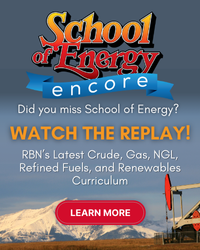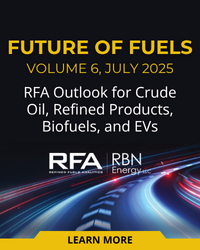Last Thursday I attended the Argus Americas Crude Summit in Houston. The RBN blog on Friday recapped several of the presentations. Three more follow that focus on Canadian oil sands crude -- resources, production and distribution alternatives. [Note that yesterday on ABC's "This Week.", Boehner indicated that the Keystone XL fight is still on. "All options are on the table,"]
|
This is another conference week for me. Today I’m speaking at the NPGA (National Propane Gas Assn.) meeting in Key West, FL. Topic – Impact of Shale phenomenon on the propane market. Tomorrow it is the Infocast Midstream Conference in Houston. Title is “NGL Pricing, Supply and Demand”. On Wednesday I’m participating in a GIS (graphical information systems) workshop sponsored by my good friend Brian Weeks with GTI (Gas Technology Institute) and Google. I’ll be posting and tweeting [yes tweeting. Follow @RustyBraziel] during the week. |
Krista Nelson, Canadian Assn of Producers – Canada’s oil sands deposits are located in three major locations: (1) the Athabasca Deposit in northern Alberta, the Peace River Deposit in central Alberta, and the Cold Lake Deposit west of Edmonton in East-central Alberta and Western Saskatchewan. 80% of the reserves are In situ while only 20% of the projects are mined. Current production is split about evenly between in situ and mined. It is the mined sites that show up in all of the negative Keystone XL propaganda. CAPP expects total oil sands production to be north of 3.5 MMb/d by 2030. I think her cartoon typifies sentiment of many Canadians.



Neil Earnest, Muse Stancil – The distribution for Western Canadian Crude oil in 2011 is shown in the table below. Most of the production is heavy, and most goes into PADD II. As has been apparent for a couple of years now, the inland market is oversupplied. And heavy oil markets (bunkers, oil power generation) are shrinking. Thus the crude wants and needs to move to coastal markets. It can’t be the East Coast, because all the refineries (except 3) are shutting down. California can’t use the heavy grades due to environmental constraints. So the choices are the U.S. Gulf Coast or overseas – the Far East. The Chinese refiners, and to a lesser extent the Japanese refiners have steadily been modifying their facilities to process heavier, sour crude oils. But you need Northern Gateway (the Enbridge project to BC) to make it happen.

Steve Fekete, IHS Purvin & Gertz – It will be tough to get Northern Gateway done. There are over 4,000 interveners in the process, and each person gets 10 minutes or so to comment. (From the panel – some interveners are housewives from Brazil, so it makes you wonder about their stake in this pipeline.).
* The Seaway Reversal + Keystone XL will overbuild the capacity needed from Cushing to the Gulf Coast.
* Pipeline constraints will start to restrict Canadian production by 2014 to 2016 unless Keystone XL or something else gets built.
* Flows on Capline have already declined precipitously, and will decline more. Panel discussion - It may make sense to reverse Capline,







